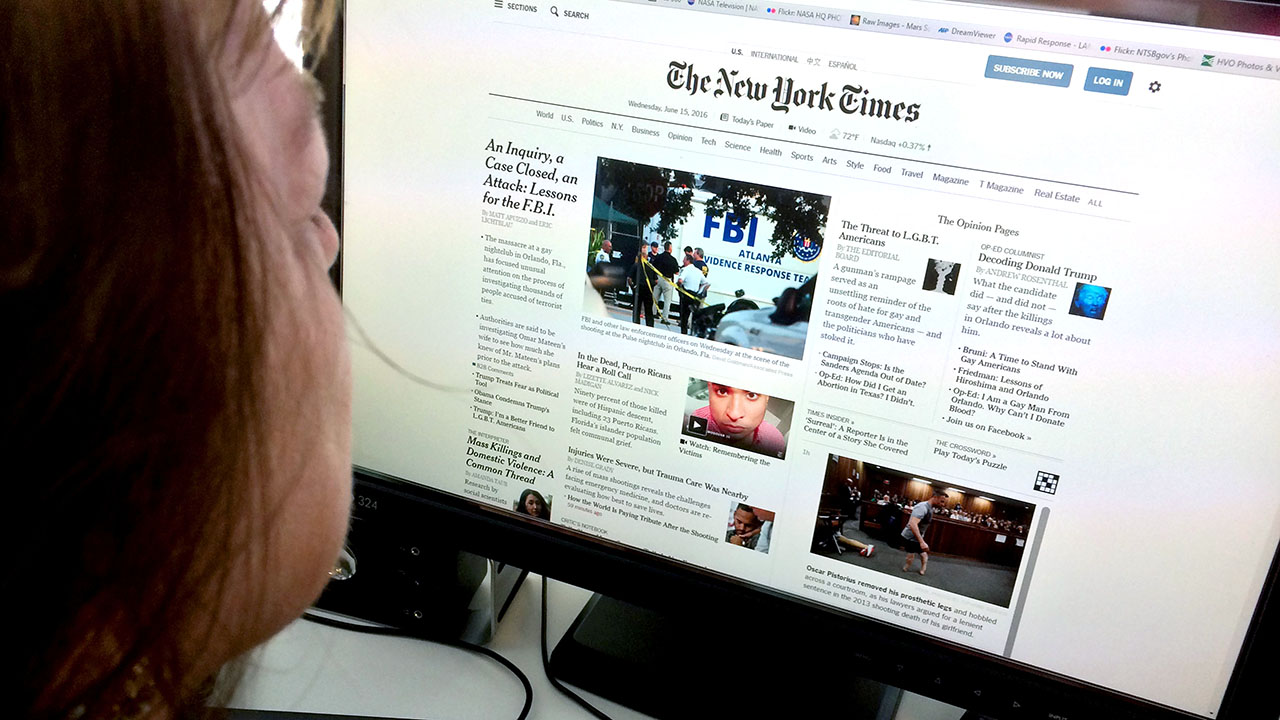DW News Offering Unbiased Perspectives on Global Matters
DW News Offering Unbiased Perspectives on Global Matters
Blog Article
The Advancement of Journalism in the Age of Information Online
In the rapidly changing landscape of journalism, the electronic age has actually introduced a new age where the immediacy of on the internet news reshapes both its development and usage. As electronic platforms multiply, they boost interactivity and expand the reach of journalism, yet simultaneously test typical norms with the speedy spread of details and false information alike. The surge of citizen reporters and independent voices even more makes complex the story, contributing to a dynamic yet precarious media ecosystem. As we navigate these intricacies, one should wonder about the future of journalistic honesty and just how it can be protected in the middle of these transformative modifications.

Increase of Digital News Operatings Systems
The surge of electronic information systems has essentially transformed the landscape of journalism, noting a shift from standard print media to vibrant, on-line rooms. This advancement was moved by developments in modern technology and the raising availability of the internet, which enabled information to be shared rapidly and extensively. Unlike their print equivalents, electronic platforms can instantly update web content, giving real-time news protection and evaluation that appeals to the contemporary visitor's need for immediacy and importance.
Digital platforms have likewise expanded the scope of journalism, allowing a diversity of point of views and voices. With reduced obstacles to entry, independent journalists and smaller sized wire service can reach worldwide target markets, testing the syndicate as soon as held by established media conglomerates. This democratization of information has actually enriched the general public discussion, providing differed stories and satisfying particular niche interests that were formerly underserved.
Moreover, the combination of multimedia components such as video, sound, and interactive graphics boosts storytelling, making news a lot more obtainable and engaging (dw news). This multimedia approach not just brings in a broader audience however additionally aids in the comprehension of intricate tales. Basically, digital platforms have actually redefined journalism, cultivating development and versatility in an ever-evolving media setting

Effect of Social Network
Social media systems have better transformed journalism by modifying exactly how news is consumed and shared. These platforms have actually democratized news dissemination, allowing anyone with net accessibility to report events in real-time. This immediacy has put standard information electrical outlets in a race to maintain up, compelling them to embrace faster reporting methods. Additionally, social media has actually increased target markets, approving journalists access to global viewership past geographical restraints.

The interactive nature of social networks fosters engagement, permitting target markets to take part in conversations, share viewpoints, and add to news stories. This communication boosts the dynamic between reporters and their audiences, promoting a more participatory form of journalism. Nonetheless, this likewise places enormous stress on journalists to generate material that reverberates with audiences, commonly prioritizing sensationalism to record focus.
Furthermore, social media systems have become vital devices for reporters to source tales, determine public viewpoint, and network with sector peers. The reliance on social media likewise requires an essential analysis of resources to ensure the integrity of information shared.
Obstacles of False Information
Amidst the electronic revolution of journalism, one considerable obstacle is the pervasive spread of misinformation. In an era where info is swiftly accessible and plentiful, identifying between reputable news and produced web content has ended up being significantly challenging. The large quantity of info distributed throughout numerous on-line platforms typically blurs the line between truth and fiction, posturing a considerable hazard to the honesty of journalism.
False information can spread quickly with social networks, where formulas prioritize interaction over precision, accidentally intensifying false narratives (dw news). This not only weakens public rely on media organizations however likewise promotes a setting where misleading material can influence public viewpoint and decision-making procedures. The challenge for journalists is twofold: to expose falsehoods efficiently and to copyright extensive standards of fact-checking and verification
More complicating this problem is the existence of deepfakes and innovative disinformation projects that leverage progressed modern technologies to create deceptive web content indistinguishable from legitimate coverage. As these technologies advance, so should the tools and methods used by journalists to battle them. Dealing with false information requires partnership in between media organizations, modern technology companies, and policymakers to establish thorough techniques that secure the authenticity of info in the electronic age.
Duty of Citizen Reporters
Browsing the landscape of misinformation highlights the transformative effect of resident reporters within the digital realm. As standard media electrical outlets grapple with the large rate and volume of news dissemination online, person journalists-- common people armed with smart devices and accessibility to social networks-- are playing a significantly pivotal function. These grassroots factors have actually come to be instrumental in covering events quickly, commonly providing real-time updates from the ground before mainstream media can respond.
Person journalists have actually democratized news reporting, magnifying voices that could otherwise remain unheard. By leveraging platforms like Twitter, Facebook, and Instagram, they provide diverse perspectives that challenge the narratives often pushed by established media.
Nevertheless, citizen journalism is reshaping the media landscape, compelling traditional outlets to adapt by integrating user-generated content into their reporting. By cultivating community involvement and motivating participatory journalism, these digital storytellers add to a more inclusive and dynamic news environment. As resident reporters continue to evolve, their role in shaping here public discourse remains a vital element of contemporary journalism.

Future of Journalistic Honesty
As the digital age remains to develop, the future of journalistic honesty encounters unprecedented challenges and chances. The spreading of electronic platforms has actually democratized information dissemination, enabling a larger series of voices to contribute to the news landscape. Nevertheless, this has likewise caused the spread of false information and the disintegration of rely on media. In this setting, keeping journalistic honesty comes to be critical, requiring adherence to extensive moral criteria and fact-checking procedures.
The increase of expert system and algorithm-driven content curation further makes complex the landscape. While AI can boost reporting by examining large datasets and recognizing patterns, it also postures dangers of predisposition and adjustment. Reporters need to therefore remain alert, making certain that modern technology acts as a tool for truth instead than distortion.
Additionally, the monetary stress on typical media electrical outlets demand ingenious organization designs to sustain high quality journalism. Subscription-based models, not-for-profit funding, and partnerships with tech firms are arising as possible solutions. Yet, they should be sought without jeopardizing content self-reliance.
Eventually, the future of journalistic integrity depends on the dedication of journalists and media companies to promote openness, liability, and an unwavering devotion to truth, in the middle of a swiftly changing digital world.
Conclusion
The development of journalism in the electronic age offers both challenges and possibilities. The rise of electronic news systems and social media has equalized information circulation, equipping a varied variety of voices, consisting of resident reporters.
The surge of digital news platforms has actually essentially changed the landscape of journalism, noting a change from typical print media to vibrant, on the internet rooms. With lower barriers to entrance, independent journalists and smaller information companies can reach global target markets, challenging the syndicate once held by established media conglomerates.Social media platforms have actually further reinvented journalism by altering exactly how news is eaten and shared. As conventional media electrical outlets grapple with their website the sheer speed and volume of news circulation online, person reporters-- ordinary people equipped with smart devices and access to social media-- are playing a progressively crucial duty. The increase of electronic information platforms and social media has democratized visit the site details dissemination, equipping a diverse variety of voices, consisting of resident reporters.
Report this page